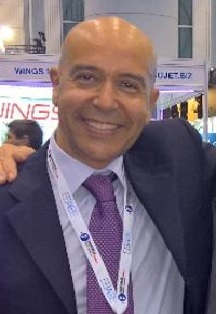Opinion: Funds Required To Improve Aircraft Recycling
Details
More Products & Services
Products & Services
Aerospace | Aviation Week Network
Aviation Week Network
https://aviationweek.com/themes/custom/particle/dist/app-drupal/assets/awn-logo.svg
Home - Aviation Group Marketing
Aviation Week Network
120 data points on over 156,000 commercial and business aviation aircraft, including military transports. Discover the most trustworthy resource for the complete aircraft history, plus ad hoc reports, month-over-month trend analysis and details on expected deliveries through 2050.
People

Andrea Rossi Prudente
Aviation Week Network

Becca Balmes
Aviation Week Network

Belinda Tan
Aviation Week Network

Brian Everstine
Aviation Week Network
Editor

Eddie Krankowski
Aviation Week Network
Assistant Manager, Tradeshows

erving dockery
Aviation Week Network

Lisa Tan
Aviation Week Network
Senior Marketing Manager

Mark Thomas
Aviation Week Network
Description
For several years, we had the privilege to co-lead the board of the Aircraft Fleet Recycling Association (AFRA) together. Derk-Jan (DJ) was a board member from 2010-19 and Amy from 2015-21. During this time, the field of aircraft disassembly and dismantling was emerging as interest grew for reusable parts and materials looking for recycling solutions. This coincided with increased awareness of environmental benefits and retiring fleets around the world. Today, as other industries start to ramp up recycling programs in batteries, electric vehicles and other technologies, we hope to capture lessons learned to replicate successes and accelerate progress in aviation.
AFRA led the way in developing best practices for standards governing operations. This results in safe re-use of components. It also aims to process the remaining materials according to the rules. Can we, however, recycle those materials better? Derk-Jan van Heerden, founder and board member, Aethos
Today, Aethos, a new foundation founded by Derk-Jan, will continue expanding the vision for the solutions on the materials that are left after all components for reuse are removed. Can we recycle (same quality) instead of downcycle (lower quality), burning or landfilling? For some materials there are currently no solutions and for some there is a solution, but can we raise the bar?
We recently had the chance to spend time together reflecting on what worked, where we saw gaps and what other industries can learn from our journey and us from theirs. We aim to share recommendations about the path ahead for aviation and all industries working to recycle more.
Three notable areas include the need for more disclosures, regulatory harmonization and material acceptance.
DISCLOSURE OF MATERIALS
Recycling rates can be far higher if original manufacturers, across the value chain, disclose the specific materials in components. Amy Bann, former VP, board of directors, AFRA
For example, marking plastics with the type symbol can enable processers to quickly identify and divert the material to the correct stream. Similarly, metal alloys can be processed with higher value uses if they are marked and segregated from other metals. If the marking of a material is not possible, sufficient information should be available to split materials for better recycling. Thoughtful placement of markings also matters: Weather-facing components are prone to fading or rubbing off. Internal notations and a digital record are preferable.
Understandably, producers are not incentivized to disclose their product specifications for competitive advantage to preserve proprietary information and trade secrets. This remains an area ripe for increased transparency with reasonable measures to address corporate controls on product configurations. If the type of material is not clear enough, recycling becomes impossible. Downcycling may be possible but landfilling or incineration are the most likely outcomes.
STANDARDIZATION OF REGULATIONS
Recycling rates benefit when rules are consistent across borders. We spent a lot of time sorting out issues in specific countries, from the U.S. and European Union to Turkey, China and many other jurisdictions. There are varying regulations for aircraft transportation when not in service, as well as waste classifications and transport. Global-level standards help optimize outcomes for end-of-life materials.
Aviation manufacturing is regulated for safe production to reach the required quality. There are many components manufactured where virgin material use is required. That means using recycled material is not permitted.
There are exceptions in certain metals such as aluminum—processes where the supply comes from a combination of virgin and recycled material. The quality is accepted after processing to required specifications regardless of origin; the product may then be sold to manufacturers in a uniform state without declaring which batches are virgin versus recycled.
There are, however, also processes where the status is known; for example, when there is some remaining excess material from production. Some materials could then be used for production of the next batch immediately or with minimal processing, but it is prohibited by regulations. The quality needs to stay the same with the products being made. If maintaining quality is possible, the recycling of manufacturing material should be allowed. If a material cannot be used to make an aircraft component, then it is suitable for downcycling only. Aviation is the highest value use.
THE PATH AHEAD
Looking ahead to the future of aircraft recycling, Derk-Jan has founded Aethos, a nonprofit foundation to build on and expand the successes in aviation recycling. Aethos is partnering with the leading organizations in this space including AFRA.
Why has Aethos been launched? The recycling of the materials that are left on an aircraft, after all components for reuse are removed, is challenging. Some materials have no solution and most of the materials are downcycled. It is difficult to find solutions to recycle within aviation, making new components from materials from old components. The challenges are quantity, cost and technology.
Aethos's objectives include:Funding targeted research and sharing the results of better solutions.Transparent publication of data and processes to ensure that everyone who is actively involved in recycling old aircraft knows what is possible and how to do it (obviously protecting intellectual property where needed).Finding steps forward on recycling that are cost-neutral and feasible. Finding a step that will make money is currently close to impossible due to unique aviation materials and low quantities. Solutions that add costs anywhere in the supply chain have not been workable, so we must identify more economic options.
Aethos is seeking philanthropic or corporate development funds to help aviation raise the bar on recycling. Please consider supporting as a donor, partner or researcher. Your contribution will help drive progress in aerospace recycling and industries beyond by filling key gaps in the field. Know that aviation needs to score points on environmental performance. Many of them will take a long time. Just taking steps in better, smarter recycling of materials can happen next month.
AFRA led the way in developing best practices for standards governing operations. This results in safe re-use of components. It also aims to process the remaining materials according to the rules. Can we, however, recycle those materials better? Derk-Jan van Heerden, founder and board member, Aethos
Today, Aethos, a new foundation founded by Derk-Jan, will continue expanding the vision for the solutions on the materials that are left after all components for reuse are removed. Can we recycle (same quality) instead of downcycle (lower quality), burning or landfilling? For some materials there are currently no solutions and for some there is a solution, but can we raise the bar?
We recently had the chance to spend time together reflecting on what worked, where we saw gaps and what other industries can learn from our journey and us from theirs. We aim to share recommendations about the path ahead for aviation and all industries working to recycle more.
Three notable areas include the need for more disclosures, regulatory harmonization and material acceptance.
DISCLOSURE OF MATERIALS
Recycling rates can be far higher if original manufacturers, across the value chain, disclose the specific materials in components. Amy Bann, former VP, board of directors, AFRA
For example, marking plastics with the type symbol can enable processers to quickly identify and divert the material to the correct stream. Similarly, metal alloys can be processed with higher value uses if they are marked and segregated from other metals. If the marking of a material is not possible, sufficient information should be available to split materials for better recycling. Thoughtful placement of markings also matters: Weather-facing components are prone to fading or rubbing off. Internal notations and a digital record are preferable.
Understandably, producers are not incentivized to disclose their product specifications for competitive advantage to preserve proprietary information and trade secrets. This remains an area ripe for increased transparency with reasonable measures to address corporate controls on product configurations. If the type of material is not clear enough, recycling becomes impossible. Downcycling may be possible but landfilling or incineration are the most likely outcomes.
STANDARDIZATION OF REGULATIONS
Recycling rates benefit when rules are consistent across borders. We spent a lot of time sorting out issues in specific countries, from the U.S. and European Union to Turkey, China and many other jurisdictions. There are varying regulations for aircraft transportation when not in service, as well as waste classifications and transport. Global-level standards help optimize outcomes for end-of-life materials.
Aviation manufacturing is regulated for safe production to reach the required quality. There are many components manufactured where virgin material use is required. That means using recycled material is not permitted.
There are exceptions in certain metals such as aluminum—processes where the supply comes from a combination of virgin and recycled material. The quality is accepted after processing to required specifications regardless of origin; the product may then be sold to manufacturers in a uniform state without declaring which batches are virgin versus recycled.
There are, however, also processes where the status is known; for example, when there is some remaining excess material from production. Some materials could then be used for production of the next batch immediately or with minimal processing, but it is prohibited by regulations. The quality needs to stay the same with the products being made. If maintaining quality is possible, the recycling of manufacturing material should be allowed. If a material cannot be used to make an aircraft component, then it is suitable for downcycling only. Aviation is the highest value use.
THE PATH AHEAD
Looking ahead to the future of aircraft recycling, Derk-Jan has founded Aethos, a nonprofit foundation to build on and expand the successes in aviation recycling. Aethos is partnering with the leading organizations in this space including AFRA.
Why has Aethos been launched? The recycling of the materials that are left on an aircraft, after all components for reuse are removed, is challenging. Some materials have no solution and most of the materials are downcycled. It is difficult to find solutions to recycle within aviation, making new components from materials from old components. The challenges are quantity, cost and technology.
Aethos's objectives include:Funding targeted research and sharing the results of better solutions.Transparent publication of data and processes to ensure that everyone who is actively involved in recycling old aircraft knows what is possible and how to do it (obviously protecting intellectual property where needed).Finding steps forward on recycling that are cost-neutral and feasible. Finding a step that will make money is currently close to impossible due to unique aviation materials and low quantities. Solutions that add costs anywhere in the supply chain have not been workable, so we must identify more economic options.
Aethos is seeking philanthropic or corporate development funds to help aviation raise the bar on recycling. Please consider supporting as a donor, partner or researcher. Your contribution will help drive progress in aerospace recycling and industries beyond by filling key gaps in the field. Know that aviation needs to score points on environmental performance. Many of them will take a long time. Just taking steps in better, smarter recycling of materials can happen next month.

Share
Recent Chats
Share via email
Future: handle WhatsApp here
Future: handle LinkedIn here
Future: handle Twitter here
SUBMENU HERE
Share via Chat
Copy Link

